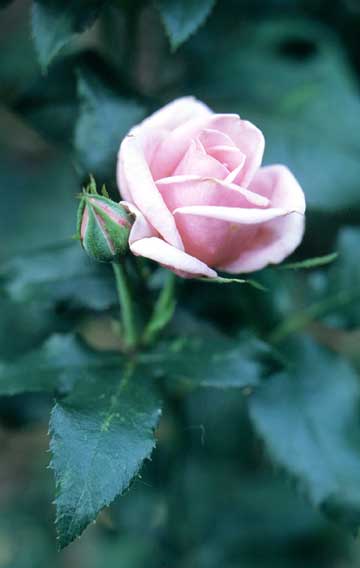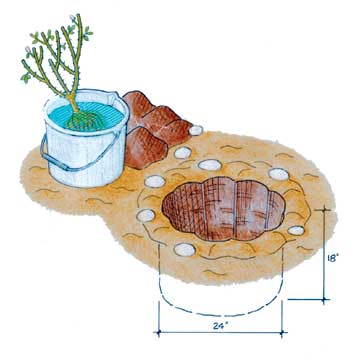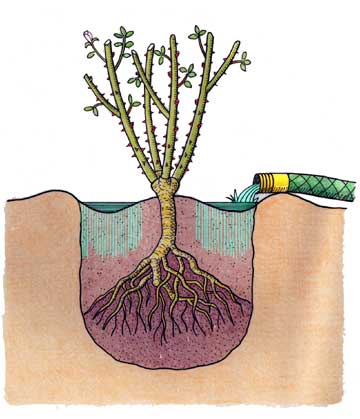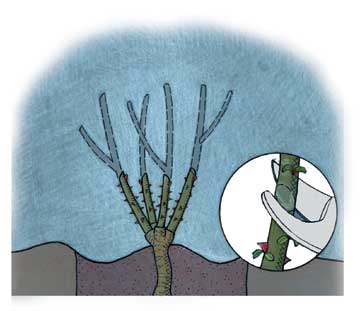





 Proper care of bare roots will lead to healthier roses.
Proper care of bare roots will lead to healthier roses.
You can buy bare roots (dormant plants sold and shipped without soil around their roots), and plant them in late winter in warm climates or early spring in cold climates. If you buy potted plants that have already commenced growing, plant them as you would any garden plant, anytime from spring through early fall.
Stoke your passion for roses with our list of award-winning selections from the 1970s to 2000s.
continue reading belowIf bare roots arrive before you prepare the planting hole or the ground thaws, it's important to protect them until you can get them in the ground. As long as the roots stay moist, they'll be fine for a day or two. Open any plastic wrapping around bare roots, and refresh roots in a bucket of water if you will plant them within 12 hours. Otherwise, sprinkle roots with water and leave them wrapped in plastic for a day or two.
If you're looking at a longer period before you plant, it's best to heel them in a bare spot or ground. Stand bare roots up in a bucket, or lay them at a 45-degree angle in a shallow, shaded trench. If the ground is still frozen, plant the roots in a large pot. Either way, cover the roots and top third of the plant with soil, compost, or peat moss. Water as often as necessary to keep the roots moist. Then plant as early as possible to avoid damaging new roots and top growth.
 Remember to soak roots in water before planting, and add compost to your rose's new home.
Remember to soak roots in water before planting, and add compost to your rose's new home.
Give your roses the right environment for growth. Select a location where they'll receive at least six hours of sun. The site should be permanent, away from competing trees and shrubs. Don't expect a plant to live in the same spot where another rose died.
1. Before planting bare-root roses, soak roots in a bucket of water for at least two hours (no longer than 12 hours). Prune roots that are broken, injured, or too long.
2. Dig a hole 12-18 inches deep and 2 feet wide, keeping the backfill close. Add two shovelfuls of composted manure or compost to the hole, then mix it into the bottom soil. Set the plant in the hole and spread the roots evenly around it. Position the plant so that the bud union (a swelling at the base of a grafted plant where the new plant was grown on the rootstock) is 1 inch above the soil surface in warm climates or 1 inch below the surface in cold climates. Use your shovel handle as a guide. Own-root roses differ from grafted or budded stock. Grown from cuttings, they develop their own root systems and don't have a knobby bud union. Simply plant them about 1 inch deeper than they were planted in their pot.
 Add water to the hole to settle the soil.
Add water to the hole to settle the soil.
3. Backfill the planting hole two-thirds full, add water, then allow it to drain. This helps settle the soil. Fill the hole with more soil; water again.
 Promote a healthy rose by pruning
dead branches.
Promote a healthy rose by pruning
dead branches.
4. Prune new roses back by one-third to concentrate the plant's energy in growing roots; remove any dead or broken wood to foster strong canes. When planting container-grown roses, keep pruning to a minimum at planting time. Wait several weeks until leaves develop and canes resume growing; then feed.
Copyright © www.100flowers.win Botanic Garden All Rights Reserved